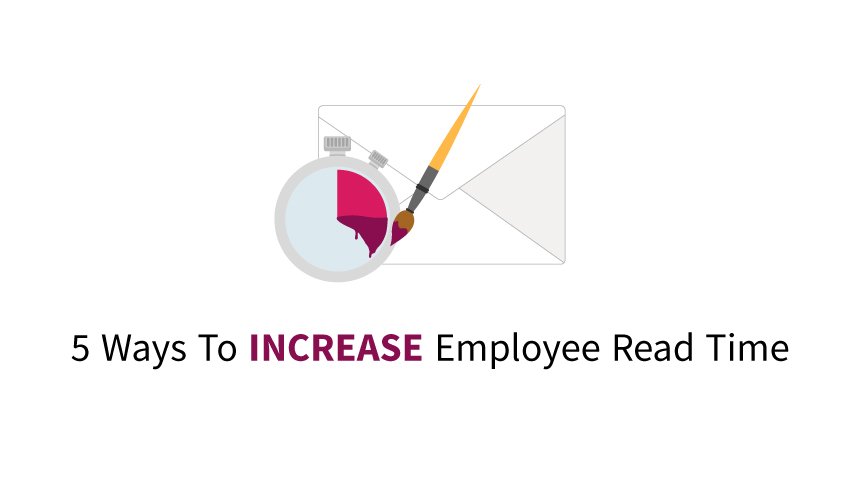When’s the last time you read a newsletter or mass email, top to bottom?
Yeah, I’m talking to you.

Exactly.
It’s rare even on a good day. It would have to be a pretty awesome or important email.
So why do we expect employees to read company newsletters and emails any differently?
Now, you may be already tracking open and click rates on your internal newsletters. But if you’re taking a look at the read time, you may be feeling less confident about your email open and click rates.
Sure, 75% of employees on your distribution list may have opened the email, but your read time data may tell a very different story about their engagement.
The truth is that employees may be opening your emails and clicking on the links — but that still doesn’t mean they’re reading your email content.
The bright side is that you’ve got loads of room to improve and we’re going to help you every step of the way. We’ve put together a short list of the easiest ways to capture employees’ attention so they’ll actually read your emails.
Let’s get started:
1. Time it
If you’re sending your email when employees don’t have time to read it or at times when they don’t want to read it, expect most people to merely glance and delete the email.
Even if they don’t delete the email, if they don’t have time to read it at the moment, it’s likely to get lost under a pile of other emails in their inbox.
Experiment with different times of day and days of the week to determine the best time to send.
2. Send better content
Is your content relevant? Beneficial? Interesting?
If you didn’t answer yes to all of these questions, then I bet your read time isn’t as good as you’d like it to be. If you want people to read your email, you have to give them something they want to read.
And how do you do that? Well…
3. Write better

Even the most mundane corporate topics or messages that need to be communicated can be made interesting.
Find a way to help employees relate to the content. Show them how it affects them personally. Use emotion or storytelling to give it heart and context, and you’ll have people reading in no time.
Interesting headlines are a good way to draw people in. So give them headlines they can’t ignore.
Once they’re hooked, make sure you keep it brief, clear, and relevant. Cut all the jargon and buzzwords. You might think writing more will increase your read time, but it will really just bore readers and they will check out before you get to the point.
4. Mix it up
Sometimes people will see a long email and think, “Nope.”
If your email is a dense wall of text and people can’t figure out what the point is right away, they’re likely to ignore it.
It helps to draw readers in with images and different media types. Use blocks and different content styles like Q&As, spotlights, or stories to make important information interesting.
People are used to reading less than 280 characters before they check out, so get creative with how you give people information — and don’t demand more of their time than you need.
5. Make it pretty

I can sense you cringing already. I know this phrase is a big trigger for most communicators — but when it comes down to it, good formatting and design do make a difference.
If your email looks hard to read, uninteresting, or muddled, people won’t bother. Simple as that.
Now this doesn’t mean that you have to be a master designer or anything, but be aware of how your font choice, color choices, and other email design elements impact how well the email can be read.
And when in doubt: add white space. It will help break your email content up and guide your readers from topic to topic.
Setting read time goals and benchmarks
So, what’s a good read time for an internal email?
As always, it depends.
Do you want employees to read a long email message from leadership? Then you’ll want a majority of your readers to spend more than nine seconds reading it.
Just need them to download a file? Then a glance or a skim is really all you need.
Your read time goals should align with your goals for the email. And it’s your benchmarks that matter. Comparing your email read times to those of other organizations, or even comparing different types of emails you send within your organization, isn’t particularly useful.
And remember: this is a process, not just a one-time thing.
When you combine read time with other metrics like opens and clicks, you will be able to pull a full story together about your employees’ email experience.
Prioritize analyzing and testing your messages. When you look at your email communications in this holistic way, you can make your employee newsletter more readable and, ultimately, more enjoyable.



